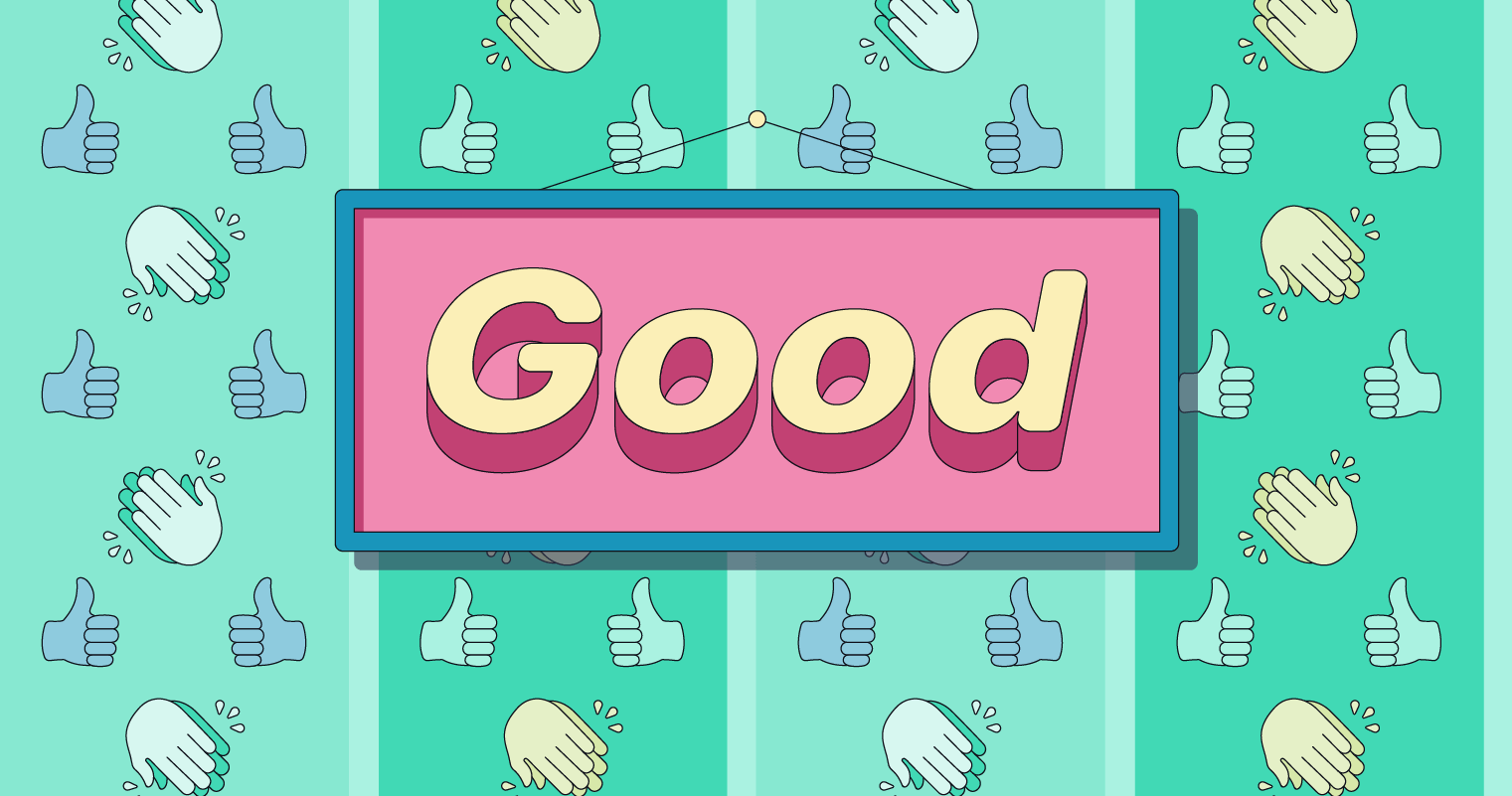Good Morning In Italian - Your Daily Greeting Guide
Starting your day with a friendly greeting can make a big difference, especially when you are somewhere new. When you visit Italy, or even just speak with someone who calls Italy home, knowing how to say "good morning" in Italian is a truly wonderful thing to know. It’s a simple phrase, yet it opens doors to connection and shows a real appreciation for the local way of doing things. You see, it is more than just words; it is a warm gesture, a sign of respect, and a lovely way to begin any interaction as the day starts to unfold.
You might think "ciao" covers everything, and in some ways, it does, but for morning greetings, there is a whole world of expressions that feel just right. This little guide will walk you through the various ways to greet someone when the sun comes up, giving you the words to use for any situation. It is, in a way, a quick path to sounding more like a local and feeling more at ease.
Getting the pronunciation just so, or figuring out when to use a certain phrase, can feel a little tricky at first. But honestly, it is not as hard as it might seem. We are going to explore the most common and polite phrases, look at some less formal options, and even touch on how these greetings reflect a bit of Italian culture. So, you know, get ready to add some lovely new words to your daily talk.
- Xxxbrits
- Chris Kempczinski Salary
- Joe Santagato
- How Much Does George Gray Make On The Price Is Right
- Rachel Hunter Net Worth
Table of Contents
- Why is "Good Morning in Italian" Important for Your Day?
- The Main Way to Say "Good Morning in Italian"
- Are There Other Ways to Say "Good Morning in Italian"?
- How Do You Respond to "Good Morning in Italian"?
- Putting Good Morning in Italian into Practice
Why is "Good Morning in Italian" Important for Your Day?
Starting the day with a proper greeting truly sets a nice tone for everything that follows. Whether you are walking through the lively streets of Rome, picking up a coffee in a small village, or just chatting with a new acquaintance, a simple "good morning" in Italian can make a big impact. It shows you are making an effort, and that effort is often met with a warm smile and an open spirit. It is, you know, a sign of respect for the language and the people who speak it, creating a pleasant feeling for everyone involved. Knowing these phrases is, in some respects, a basic part of getting along and showing politeness.
For anyone who wants to speak a bit of Italian, getting these early day greetings right is a pretty important first step. It is like laying down a good foundation for building more conversations. You will feel more confident, and the people you meet will likely appreciate your thoughtfulness. Plus, it is just a nice feeling to connect with others using their own words. It helps you, basically, fit in a little more, and feel like you belong, even if just for a moment.
The Main Way to Say "Good Morning in Italian"
When it comes to saying "good morning" in Italian, one phrase stands out above all others, and that is "buongiorno." This word is, quite simply, the most common and polite choice you can make. It is a combination of two words: "buon," which means "good," and "giorno," which means "day." So, you are literally wishing someone a good day, which is, you know, a very kind thing to do. You can use "buongiorno" in almost any situation, from speaking with someone you have just met to greeting a shopkeeper or a close family member. It is very versatile, actually, and works well in both formal and casual settings.
The sound of "buongiorno" carries a certain warmth. When you say it, you are not just saying words; you are extending a friendly welcome. It is a phrase that feels, more or less, like sunshine on a new day. You will hear it everywhere, from the moment businesses open their doors until, sometimes, even later in the afternoon. People often keep using "buongiorno" even after noon, which is a bit different from some other languages. It shows how much this greeting is part of the daily rhythm.
Understanding Buongiorno and its Use for Good Morning in Italian
The usage of "buongiorno" is pretty straightforward, but it has a little bit of flexibility. As we mentioned, it is good for formal situations, like when you are talking to someone older, a professional, or someone you do not know well. It is also completely fine for informal moments, like greeting a friend or a neighbor. This adaptability is part of what makes it so useful. You do not really have to worry too much about picking the wrong word when you choose "buongiorno" for "good morning" in Italian. It is, you know, a safe bet.
You might also hear some slight changes to "buongiorno" that are used in more relaxed settings. For instance, some people might shorten it to "buondì" or even just "giorno." These are, sort of, quicker, more familiar ways to say hello in the morning, often heard among friends or family. There are also less common forms like "buon mattino" or "buona mattina," which literally mean "good morning," but "buongiorno" is the one you will hear most often. It is, basically, the default setting for a morning greeting. Knowing these variations can help you understand conversations better, even if you stick to "buongiorno" yourself.
Are There Other Ways to Say "Good Morning in Italian"?
While "buongiorno" is the go-to phrase for "good morning" in Italian, there are, you know, other expressions that pop up, especially in casual chats or specific situations. It is not always about having a long list of words, but more about understanding the feeling each phrase carries. Some of these other ways are shorter, some are a bit more playful, and some are just regional quirks. Knowing them can really help you pick up on the subtleties of daily conversation and feel a bit more connected to the local way of speaking. It is like having a few extra tools in your language kit.
You might find that some of these variations are used more by younger people, or in very relaxed settings where formality is not a concern at all. It is important to remember that while these are ways to say "good morning" in Italian, they might not be suitable for every person or every moment. For example, you would probably not use a very casual greeting when meeting someone important for the first time. It is, you know, all about the context and who you are speaking with. These options are there for when you feel comfortable enough to use them.
Casual and Shorter Forms for Good Morning in Italian
Let us look at some of the less formal ways to say "good morning" in Italian. As mentioned, "buondì" is one you might hear. It is a bit like saying "good day" in a quicker, more relaxed fashion. Then there is "giorno," which is just a shortened version of "buongiorno." This one is very casual, almost like a quick nod. You might hear it among close friends or family members, or in a very informal setting like a local market where everyone knows each other. It is, actually, pretty common in some areas.
Another, perhaps less frequent, option is "ngiorno," which is an even more compressed way of saying "buongiorno." This one is quite regional and very informal, so you probably would not use it unless you are really trying to blend in with a specific local group. It is, more or less, a sign of deep familiarity. Also, while "buona mattinata" is a literal translation for "good morning" in Italian, it is not the usual phrase people choose. "Buongiorno" just has that established place in daily speech. It is interesting, you know, how languages often have a preferred way of saying things that is not always the most direct translation.
How Do You Respond to "Good Morning in Italian"?
When someone offers you a "good morning" in Italian, knowing how to respond is, you know, just as important as knowing how to say it first. It is part of the give and take of conversation, a way to show you are engaged and polite. The simplest and most common response is to simply say "buongiorno" right back. It is a perfectly fine and friendly way to acknowledge their greeting. This shows that you heard them and are returning their good wishes. It is, basically, a conversational echo, and it works every time.
However, you can also add a little something extra to your response if you wish. You might add a courtesy expression, like "grazie" (thank you), especially if they are offering you something or being particularly helpful. For example, "Buongiorno, grazie!" can feel very warm and appreciative. You could also, in some respects, combine it with a question about their well-being, like "Buongiorno, come stai?" (Good morning, how are you?), if the situation feels right and you know the person a little. This shows you are interested in more than just a quick hello, which is, you know, a nice touch.
The way you respond can also reflect the level of closeness you have with the person. If it is a very casual interaction, a simple "buongiorno" is all you need. If it is someone you see often, or a friend, adding a little more can make the exchange feel, very, more personal. The idea is to match the warmth and tone of the greeting you received. It is like a little dance of words, where each step feels, kind of, just right. Learning these small additions can really enrich your morning chats and help you build connections.
Putting Good Morning in Italian into Practice
Learning how to say "good morning" in Italian is, really, a valuable step towards feeling more comfortable with the language and connecting with Italian culture. It is one of those phrases that you will use again and again, making it a great place to start your language journey. Whether you are aiming to impress new friends, speak with colleagues, or just add a lovely phrase to your vocabulary, saying "good morning" can bring a smile to anyone's face. It is, you know, a universal sign of good will, and it feels pretty good to share it.
This simple lesson on Italian greetings will help you know the right words and phrases to use, no matter the situation. From formal settings where you want to show respect, to informal moments with people you know well, there is a "good morning" in Italian that fits. Remember, it is not just about the words themselves, but the feeling you put behind them. A warm, clear "buongiorno" can set a truly positive tone for the entire day, both for you and for the person you are greeting. It is, basically, a little piece of kindness you can offer each morning.
To really get the hang of it, you might want to try listening to how native speakers say these words. There are many online resources that provide audio clips, which can help you get the pronunciation just right. Hearing the rhythm and sound of the words can make a big difference in how confident you feel when you speak them. It is, you know, a good idea to practice out loud, even if it is just to yourself. The more you say it, the more natural it will feel, and soon, saying "good morning" in Italian will be a seamless part of your day.
- Joe Santagato
- Janet Lee Constantine
- Sean Lew And Kaycee Rice
- %C3%B0%C3%B0%C2%B5%C3%B1%C3%B1%C3%B0%C2%B5%C3%B0%C3%B0%C2%BA%C3%B0
- Bezos

Examples of Other Ways to Say “Good” | Grammarly

Animated illustration of good sign | UGOKAWA

On ‘Good,’ The Most Commonly Used Word in Practice | Teach Like a Champion